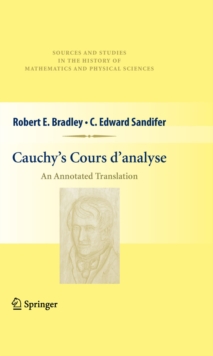
Kurt Godel: Results on Foundations PDF
Edited by Maria Hameen-Anttila, Jan von Plato
Part of the Sources and Studies in the History of Mathematics and Physical Sciences series
Description
Kurt Godel (1906-1978) gained world-wide fame by his incompleteness theorem of 1931. Later, he set as his aim to solve what are known as Hilbert's first and second problems, namely Cantor's continuum hypothesis about the cardinality of real numbers, and secondly the consistency of the theory of real numbers and functions. By 1940, he was halfway through the first problem, in what was his last published result in logic and foundations. His intense attempts thereafter at solving these two problems have remained behind the veil of a forgotten German shorthand he used in all of his writing.
Results on Foundations is a set of four shorthand notebooks written in 1940-42 that collect results Godel considered finished. Its main topic is set theory in which Godel anticipated several decades of development. Secondly, Godel completed his 1933 program of establishing the connections between intuitionistic and modal logic, by methods and results that today are at the same time new and 80 years old.
The present edition of Godel's four notebooks encompasses the 368 numbered pages and 126 numbered theorems of the Results on Foundations, together with a list of 74 problems on set theory Godel prepared in 1946, and a list of an unknown date titled "The grand program of my research in ca. hundred questions.''
Information
-
Download - Immediately Available
- Format:PDF
- Publisher:Springer Nature Switzerland
- Publication Date:17/07/2023
- Category:
- ISBN:9783031378751
Information
-
Download - Immediately Available
- Format:PDF
- Publisher:Springer Nature Switzerland
- Publication Date:17/07/2023
- Category:
- ISBN:9783031378751










